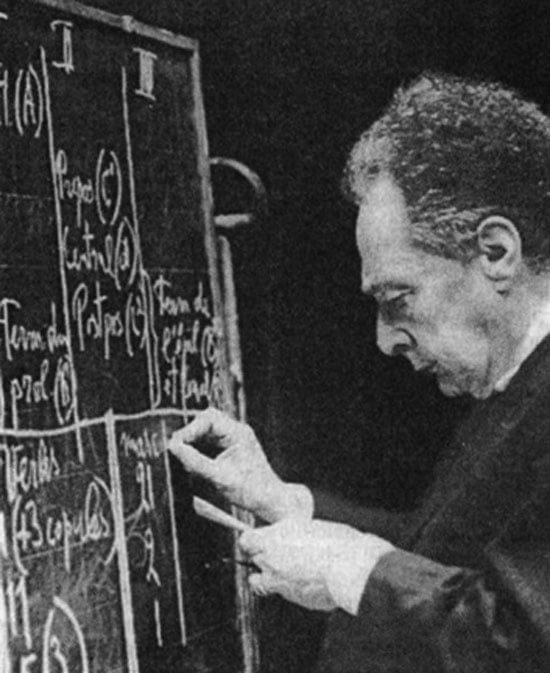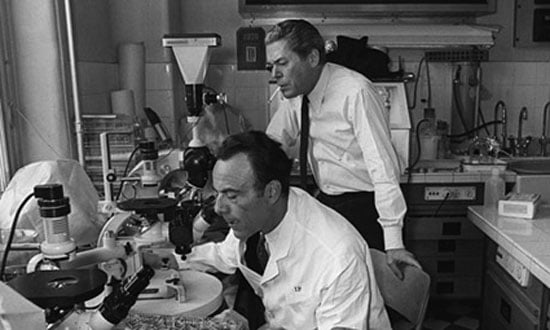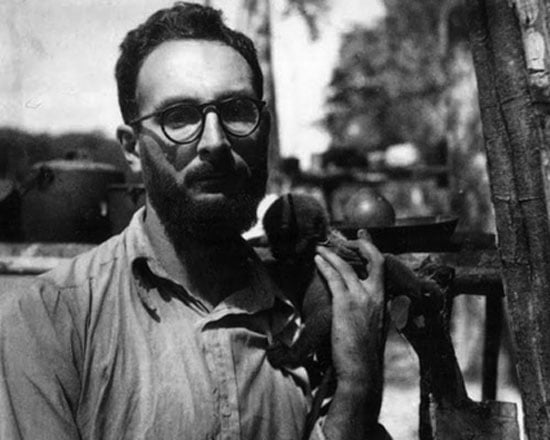
The gentleman in the first photograph is the renowned linguist Roman Jakobson, one of the principal (if not the principal) founders of structuralism in linguistics. Taking Saussure’s theories as his starting point, he pushed them a step further. In the relevant theories, the so-called phonemes (rather like unique characteristic sounds) are the building blocks of language. Jakobson took the segmentation one stage further, arguing that even these are constructed on the basis of opposed (binary…) pairs of distinctive features relating to the manner of production inside the oral cavity (e.g. the opposition between nasal and oral consonants). Through these oppositions language is built as a system in which messages stabilize their meaning only by virtue of their structural relations to other elements of the system. Needless to say, Jakobson was thrilled by cybernetics and its similarities to his own linguistic theories (he was not alone; the U.S. Army was also interested in as systematic a study of language as possible along such lines. It needed automatic translation systems from Russian, you see…).

In the second photo is the French biologist François Jacob (left), who was awarded the Nobel Prize for his research in molecular biology. He was also a proponent of cybernetics. What is the connection between Jakobson and Jacob? In 1967, French television broadcast a debate in which both took part. The topic was the relationships and analogies between molecular biology, linguistics, and anthropology. At one point in the discussion, Jacob made the following remark:
“It is particularly striking to find that, just as genetic information is formed through the juxtaposition and sequential arrangement of four units, so language is formed in a similar way through the organization, combination and rearrangement of a sequence of very small units”.
Jakobson’s answer:
«From the first time I encountered linguistic terms being used in biology, I said to myself: one has to see whether we’re dealing here with a mere fad, a metaphorical usage, or something much deeper. And I must say that in the end it is perfectly legitimate for biologists to speak from a linguistic perspective, and that one could go much further. What do a linguistic system and a molecular-biology system have in common? Mainly this (something of exceptional importance): that they involve the same architecture, the same construction principles, a strictly hierarchical principle.»

The allure of cybernetics was of course not confined to biology. A large part of modern linguistic theories trace their origins to it. In the last photo is the anthropologist Claude Lévi-Strauss, who also took part in that debate. Although he too is classed among the structuralists, he was the only one to voice some reservations. The tone of the discussion, however, was clearly playing in a different key. Cybernetic systems everywhere.
